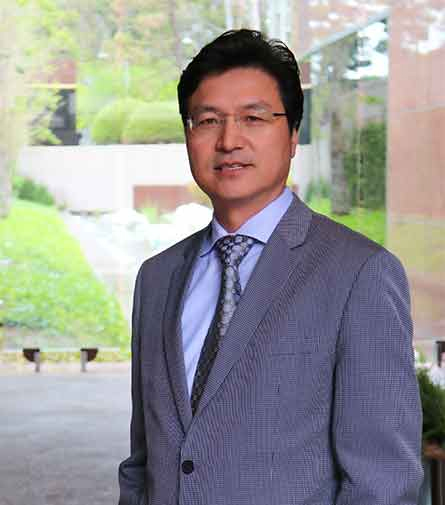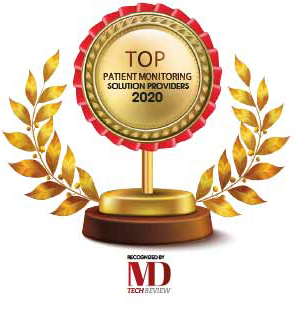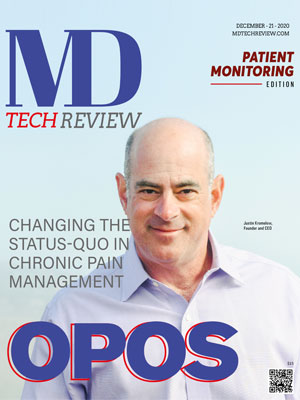 Steve Lee, CEO
Steve Lee, CEODriven by the mission to advance respiratory medicine, MediPines is perfectly poised to help clinicians and medical practitioners overcome these challenges and obtain gas exchange measurements accurately and non-invasively. MediPines provides physiology-based respiratory devices that enhance clinical effectiveness and deliver better patient outcomes. The MediPines AGM100® Advanced Respiratory Monitoring System, a non-invasive pulmonary gas exchange monitor, provides healthcare providers with information on patient gas exchange, previously only available through invasive or complicated methods.
In a conversation with the editorial team at MD Tech Review, Steve Lee, CEO of MediPines, discusses how his company has been providing innovative solutions to address the challenges around invasive and inefficient respiratory monitoring methods.
How has the COVID-19 pandemic accelerated the need for respiratory monitoring tools?
Even before the COVID-19 pandemic hit, the world was facing a tsunami of respiratory diseases, with 350 million people globally suffering from respiratory illnesses. This rising tide of respiratory diseases was, in part, due to the pre-existing prevalence of respiratory diseases like chronic obstructive pulmonary disorder (COPD) and asthma, combined with demographic trends and environmental factors like the aging population, occupational exposure, and air pollution. Now with a massive respiratory infectious disease like COVID coming into the picture, the burden of respiratory disease has magnified. COVID has shown us that our preparedness as a society was lacking, and from a patient monitoring perspective, it has exposed a critical blind spot in respiratory assessment, mainly the ability for clinicians to obtain a fast, comprehensive, and objective measure of gas exchange.
Existing tools for respiratory status detection, while useful in the right applications, are gravely inadequate in a respiratory pandemic as they do not directly measure gas exchange, the primary function of the lungs. Surrogate methods, such as ABG, X-rays/CT scans, and pulmonary function tests (PFT), require multiple staff and a dedicated facility, yet they fail to provide a complete picture of gas exchange.
Gas exchange impairment, due to infection or any other medical condition, can be measured by the AGM100 which can inform doctors’ decisions.
What are the ongoing trends in the respiratory monitoring space today, and is your product aligned with these trends?
There is a growing emphasis on non-invasive technology, evidence-based personalized medicine, and team-based care decision making. Our technology is non-invasive and renders near-real-time results. The AGM100 session results screen displays how well oxygen is being transported from the lungs to the blood. FDA cleared respiratory parameters are available for the clinician in less than 2 minutes from a patient’s simple breathing sample, providing them with a full view of the lung's gas exchange. It takes a real breakthrough innovation to provide such results, and that is exactly what we are doing with our technology.
Treatment choices vary by a patient’s condition and severity. There is a suite of options available for clinicians to choose from, like supplemental oxygen, steroids, lung expansion therapy, BiPAP or CPAP, and proning (simple changes in body position). Depending on the condition of the patient and the extent of respiratory impairment, these treatments can now be individualized. With information provided by our technology, care providers can provide personalized treatment and therapy with the high confidence that was previously lacking, simply because a measurement system like ours was not available.
Our objective respiratory measurements are highly accurate and reproducible, enabling physicians, respiratory therapists (RT), and nurse care teams to make decisions with a higher probability of being correct in their treatment choices. As a result, patients benefit from the efficient and accurate determination of problems in the early stages of a respiratory ailment.
Could you describe how the MediPines AGM100 works and how it benefits clinicians?
Our non-invasive device, AGM100, is extremely simple to use providing a critical respiratory panel in 90 seconds. The test is not patient effort dependent allowing for broad application, which proves very efficient for the care provider. Clinicians and medical providers are faced with three essential questions when dealing with respiratory issues as oxygen travels from ambient air into the lung and to the circulating blood: 1) Is ventilation adequate? 2) Is gas transport from the lung to the blood efficient? 3) Is blood oxygenation sufficient? The AGM100 provides important information about ventilation through carbon dioxide measurements. Our oxygen deficit measures gas exchange efficiency, and our calculated arterial blood oxygen level provides answers to the sufficiency of blood oxygenation. These are critical measurements when assessing respiratory status and are relevant to all kinds of respiratory cases like impending respiratory failure, pulmonary edema, pulmonary embolism, influenza-led ARDS, and asymptomatic pneumonia that we typically see in COVID cases.
Our portable device can be operated by a nurse, RT, or physician with the push of a button and requires far fewer resources. Our estimates show that hospital providers that use our device can expect to gain 60 times the operating advantage compared to closest alternatives.
Could you provide a case study where you helped your client attain the desired outcomes with your solution?
When the Covid pandemic hit, the squeakiest wheel got the most grease in the ER. The patients who expressed outward symptoms were admitted at the expense of those who were more severe and “deserving of admission” so to speak. In the upper Midwest, one hospital was slammed with COVID patients and the patients admitted, were not necessarily the ones who needed hospitalization. After using our device, they became very excited about the difference AGM100 was making in their practice. In one case, they were evaluating a patient and leaning toward discharging this patient. However, after taking the patient’s gas exchange measurements with the AGM100, they realized that this patient had high oxygen deficit and they needed to quickly initiate the oxygen therapy so they admitted the patient. On the very next day, a husband-and-wife came in complaining of all sorts of symptoms. Taking their gas exchange measurements, it turned out that they were able to safely treat themselves at home. Our technology allows for medical professionals to rapidly assess respiratory status, titrate interventions and determine response to therapy.
What does the future hold for your company?
MediPines wants to continue to advance respiratory medicine by working closely with global thought leaders and research partners like UC San Diego, University of British Columbia, Mayo Clinic, Duke, and Seattle Children's Hospital. We are currently working with top hospitals in the U.S. and Canada as they protocolize the respiratory assessment and enhance their current method of determination in their practices. This imperative to move away from generalized “one-size-fits all” care to “personalized, individualized” care will only continue to become more important in medicine as mandates to improve patient outcomes continue to grow. Therefore, we are focused on developing technologies that foster "Prevention through Timely Intervention" by rapidly providing information to clinicians and providers to significantly improve patient care outcomes with a high degree of efficiency to the system. This is consistent with our mission of advancing respiratory medicine.
Company
MediPines
Headquarters
Orange County, CA
Management
Steve Lee, CEO
Description
MediPines is advancing respiratory medicine by providing physiology-based respiratory devices that enhance clinical effectiveness and achieve better patient outcomes. The MediPines AGM100® Advanced Respiratory Monitoring System, a non-invasive pulmonary gas exchange monitor, provides healthcare providers with information on patient gas exchange previously only available through invasive or complicated methods. The company is perfectly poised to help clinicians and medical practitioners overcome challenges around pulmonary gas exchange and obtain gas exchange measurements accurately and non-invasively




